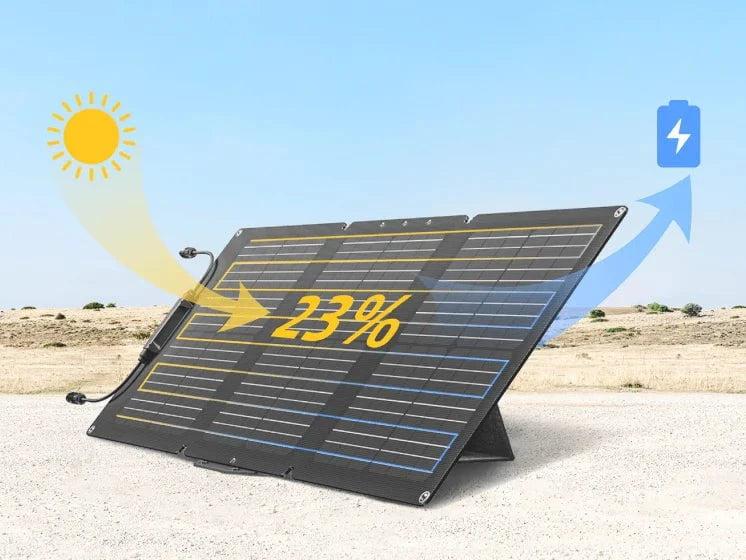With the prices of power escalating, many homeowners find themselves looking up into the sky for an answer to ever-growing electricity bills. But one of the biggest concerns potential solar adopters have is understanding just HOW many panels they need. The question “how many solar panels do I need?” is more than just putting a cap on your energy usage – it’s making a smart investment that perfectly fits how and when your home uses energy. “The answer is not one-size-fits-all and may depend on your electric bill or what size system is allowed by your utility,” now and in the future under evolving regulations, said Roth, owner of Advance Solar and Energy Solutions in Fort Myers. This article will provide a simple step-by-step process to calculate how many solar panels you need. Armed with knowledge about your energy requirements and your area’s climate, you’ll know what you need to make an educated decision about your solar purchase and what type of system will provide the perfect amount of power to your household.
How Solar Panels Work: The Photovoltaic Effect Explained
Photovoltaics works by using the photovoltaic effect demonstrated in 1896 by Antoine Becquerel to convert sunlight into electrical current. At the heart of the panels are silicon photovoltaic cells that respond when photons from sunlight hit the cells’ surface. Inside these cells are layers of semiconductor material that have positive and negative charges, forming an electric field. When the cells are struck by the sunlight, the energy can translate into excitement in the electrons, which break free and create an electric current. This direct current (DC) travels to an inverter, which turns it into alternating current (AC), the type that your home’s appliances use. The degree of efficiency of this conversion process is affected by a few factors, being the most important the strength of available sunlight and the panel’s orientation. Three percent of sunlight can be turned into electricity by modern solar panels, which does not sound like much, but you might be surprised. In reality, photovoltaic panels yield power, albeit with lower efficiency, even on cloudy days. They also work great in cold temperatures because the cooler it is, the better they convert. Once it is realized how this basic operation occurs, it provides insight as to why panel location and care are essential for optimal energy generation.
Understanding Your Energy Consumption Profile
The first step to finding out how many solar panels you need for your home is to work out how much energy you use on a daily basis. Begin by looking at your supermarket bills from the last 12 months – you’ll see your monthly usage of kilowatt-hours (kWh) clearly set out. Many utility providers offer real-time usage information on the web, and many utility providers offer online access to detailed consumption data, including peak usage times, which tend to fall between 4 PM and 9 PM. For example, comparing seasonal shifts and billing trends across cities, such as reviewing san angelo electricity rates, can help homeowners estimate more accurate cost savings from solar. Today’s smart meters come with a companion app for real-time monitoring, enabling you to see when you use the most electricity. Seasonal changes can make a dramatic difference in the amount of energy you use; during the summer, air conditioning can lead to higher usage, while the cold winter months can mean more light, as well as heating to keep your household warm. If we want to get a bit more specific, let’s look at the energy use of common household appliances: a refrigerator might use between 300 and 800 kWh per year, and an electric water heater will generally require 4,000 kWh. A home energy monitor can show how much power appliances are pulling and thereby indicate where opportunities to save energy may lie. Additionally, many utilities provide free energy audit tools that will make personalized suggestions based on your usage. Knowing this consumption information can help you to size your solar system accordingly instead of just estimating, guesstimating.
Key Factors Determining Solar Panel Requirements
Location and Sunlight Availability
Where you are is also key to solar panel efficiency, in terms of peak-sun hours — which is the time when solar irradiance is 1000 watts per square meter. While Arizona may have as many as 6-7 peak sun hours a day, Seattle typically has 3.5-4.5. By scouting solar insolation maps, you can figure out the solar potential on your location. In addition to latitude, local variables such as shading from trees or adjacent buildings have a dramatic effect on performance. A professional shading report can point out roadblocks, as well as ideal panel location for year-round sun exposure.
Panel Efficiency and Technology Types
Today, there are generally 2 main types of solar panels: monocrystalline panels which have higher efficiency levels of 15-22% and polycrystalline panels that operate at an efficiency of around 13-17%. Normal home panels will have an ideal rating of 300-400 watts. Remember that panels degrade over time (usually by 0.5 – 1% a year) so if you are looking to estimate long-term energy production requirements.
Roof Space and Installation Constraints
Solar capacity is constrained by the amount of roof space available. 15-20 sq ft per panel is needed, and south facing roof surfaces are optimal in the northern hemisphere. The pitch of your roof affects panel efficiency – it should be the same as your latitude for optimal utility. For installations where roof mounting is not possible, ground-mounted systems are also available, but such a system needs a substantial yard, as well as zoning clearance.
Step-by-Step: Calculating Your Solar Panel Needs
Step 1: Determine Annual Energy Consumption
First, you need to determine the amount of energy you consume each year. Multiply by 12 to get the average kilowatt-hour usage per year. Allow another 25% ‘overshoot’ to cover system losses and future consumption growth. For example, if you consume 1,000 kWh per month then: (1,000 × 12) * 1.25 = 15,000 kWh would be your annual goal.
Step 2: Calculate Daily Production Needs
Convert your annual requirement into daily production targets by dividing by 365 days. Then factor in your location’s peak sun hours. If your area averages 5 peak sun hours daily, divide your daily kWh needs by 5 to determine hourly production requirements during optimal sunlight.
Step 3: Factor in Panel Wattage and Efficiency
Consider system efficiency losses from weather, dust, and temperature variations by applying an efficiency factor of 0.75-0.85. Divide your hourly production needs by your chosen panel’s wattage rating and the efficiency factor to determine panel count. This accounts for real-world conditions affecting performance.
Step 4: Example Calculation Walkthrough
Here’s an example: A California home consuming 900 kWh per month. Yearly usage: (900 × 12) × 1.25 = 13,500 kWh. Daily demand: 13,500 ÷ 365 = 37 kWh/day. With 6 peak sun hours and 380W panels at 0.8 efficiency: (37 ÷ 6) = 6.17 kW needed per sun hour. Final number of panels: (6,170W ÷ 380W) ÷ 0.8 = 20.3, rounded up to 21 panels. That same house would require 24 of the 330W models, illustrating how each panel’s efficiency affects the system size.
Solar Panel Installation Essentials
Getting to solar power isn’t easy, particularly with all the installation requirements and regulations in place. First, research your local permitting procedures – you’ll need building, electrical and utility interconnection permits before installation can begin for most jurisdictions. North American Board of Certified Energy Practitioners (NABCEP) certified installers are the ones you want to consider when choosing an installer since these certified people have the technical skills and knowledge necessary to complete the job correctly. Get a roof inspection done: Before you even mount the panels, plan an all-encompassing roof examination to actually ensure the roof will certainly hold the weight of the panels and spot which repairs need to be done. To minimize the cost of getting the system removed in the future, the roof has to have at least a decade of life left — that being said, anywhere in the range of 15-20 years is ideal. Think about if a grid-tied system is sufficient for you, or if you would like backup from a battery in the event of a power failure. For more dependable backup power, many homeowners connect their solar to portable power stations like EcoFlow units, which are compatible with solar systems. Grid-tied systems tend to provide quicker ROI due to lower system cost – but you won’t have power when the grid goes down. For continued performance, have panel cleaning and equipment checks every quarter, an electrical check-up once a year, and monitor the system by checking its performance on your inverter’s data portal. Occasional maintenance leads to peak energy production and long system life, and professional inspection always at 3-5 year intervals will catch any problems before they happen.
Making the Smart Investment in Solar Energy
With so many variables, calculating the right number of solar panels for your home may seem complicated, but it doesn’t have to be. By using the step-by-step approach I’ve provided – from assessing your current levels of energy consumption, through to accounting for local solar opportunity and panel energy output, you can work out the best number of solar panels you require. Keep in mind, while this math is a good rule of thumb, there may be variables that require you to customize these recommendations for your unique scenario, such as roof shape, local code restrictions and future energy goals. The cost to get set up with solar panels is an investment in not only a boundless power source, it also demonstrates a commitment to the future in regards to both financial and sustainability aspects. It is recommended to seek professional advice for system design and these numbers serve only as estimates, but understanding how these numbers are used will help you become a solar novice! Electricity is not getting cheaper, and getting off the grid now with a correctly sized solar panel installation can lock in decades of low-cost power!
When considering the installation of solar panels, it’s essential to factor in local conditions and professional expertise. For residents in Danville, CA, consulting with a local provider can offer tailored solutions that maximize efficiency. North Valley Solar Power specializes in understanding the unique energy needs of the area, ensuring that your solar panel system is optimized for local weather patterns and energy consumption habits. By leveraging their expertise, you can make informed decisions about the number of panels required, ultimately leading to a more sustainable and cost-effective energy solution for your home.



